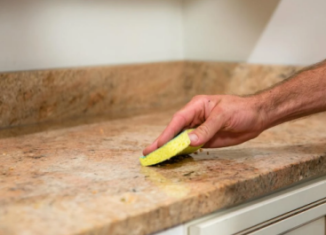
By: Christina Saitzyk
What if your doorknobs, counters, and cabinets could kill a virus the moment it landed on it? A team at the University of Michigan has created a coating that seems to work quickly, and the coating uses essential oils.
The researchers were looking at different additives for ice-phobic coatings or ice-shedding coatings. They were also looking at different essential oils as basically additives that can lower the ice adhesion or improve the ice-shedding capabilities of different polymers. The researchers began to notice that essential oils were very effective in terms of their antimicrobial capabilities.
The problem with essential oils is that they are very volatile and will evaporate fast on a surface. So even though they have excellent antimicrobial properties, they typically don’t last very long on a surface.
The researchers tried to stabilize these essential oils within different polymeric coatings to delay their evaporation rate and essentially make them last for a longer time. They had to make sure that you could encapsulate or incorporate them into different polymer films without losing the antimicrobial properties of the essential oils. The oils work by diffusing into different cell membranes for different bacteria and viruses, so the researchers tried to preserve that.
The researchers looked at the chemical structure of essential oils and found that polyurethanes have the right functionality to be able to react partially with some of the essential oils. This allows researchers to stabilize the remainder of the essential oils which provides lots of durability to the coating. At room temperature, the researchers mixed three different components into a single solution, sprayed it or brushed it with a paintbrush onto any surface, and then let it sit for a while.
All of these oils have evolved over thousands and millions of years to be able to work against a broad spectrum of pathogens, so the hope is that they will work on a broad spectrum of pathogens. The researchers can also mix and match different components, where they can take cinnamaldehyde and combine that with the alpha terpineol to work against even a broader spectrum of pathogens than one of these components alone.
People are often contaminated by germs when touching a surface with germs from another person. These coatings can kill anything in a matter of minutes and still persist on the surface for months. So, these coatings will be very beneficial in controlling the spread of germs from person to person.